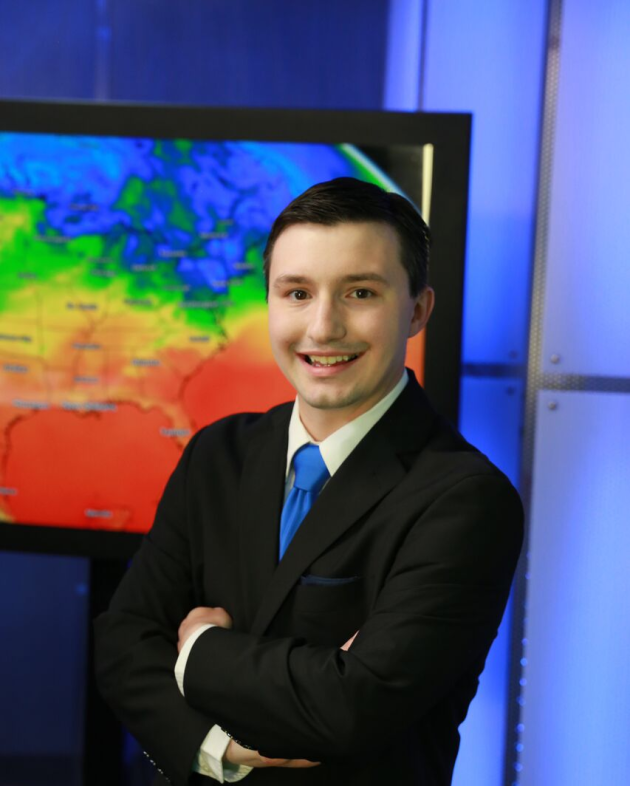A Look At The Recent Cold Stretch

We finally made it above 20 degrees Sunday in the Twin Cities! Yes, that is something to celebrate at this point after a long stretch of sub-20 highs. How long have been been in this cold stretch?

Well, we were below 20 for 13 straight days, stretching back to Christmas Day, and that long of a stretch can be a bit unusual, even by Minnesota standards. That stretch of 13 straight days with a sub-20 high is 28th all-time in the Twin Cities record books. The only time we have observed a long stretch than that in the 2000s was back from December 17, 2000 to New Year’s Day 2001 – a stretch of 16 days.
Taking a look at a longer stretch – the last time we saw a high of at least freezing was back on December 19th (38 degrees). Through Saturday, that means we’ve seen 18 straight days with a high below freezing, which would put us in a tie for 90th longest stretch on record. We have definitely had to deal with very cold weather recently – the good news is that the warmer weather we saw Sunday will last for a few days… and we could even approach 40 later this week. More details on that below!
_______________________________________________
Savor a Well-Earned, Three-Day January Thaw!
By Paul Douglas
I’m flying to Austin, Texas today to make a presentation to the American Meteorological Society. The topic: climate change messaging for conservative and evangelical audiences. Sharing scientific trends is critical, but so is framing the challenge in a way that resonates with people of faith. I don’t have the answer key, but addressing climate volatility and weather disruption by ramping up clean, renewable, homegrown energy sources (faster) will be good for jobs and our economy, if we do this right. Stay tuned.
Here in the Land of Low Weather Expectations, after what we just muddled through, 30s will feel like an epiphany; models hint at 40F Tuesday and Wednesday. Rain may end as a couple slushy inches Thursday as temperatures tumble. And a series of Pacific storms coming ashore could increase a potential for snow, looking into late January. We’re due for a shift in the pattern; an end to this vaguely embarrassing snow-drought.
Expect a few nights below 0F next weekend, but the duration and intensity of any subzero chill won’t measure up to what we just shivered through.
_______________________________________________
Extended Twin Cities Forecast
MONDAY: Patchy clouds, better. High 34. Low 24. Chance of precipitation 10%. Wind W 7-12 mph.
TUESDAY: Lots of clouds, go ahead and exhale. High 40. Low 31. Chance of precipitation 10%. Wind SE 10-15 mph.
WEDNESDAY: Gray and mild, a little drizzle? High 42. Low 30. Chance of precipitation 30%. Wind S 8-13 mph.
THURSDAY: Rain may end as few inches of snow. High 32. Low -2. Chance of precipitation 80%. Wind NW 10-15 mph.
FRIDAY: Mostly cloudy, feels like January. High 12. Low 2. Chance of precipitation 20%. Wind NE 5-10 mph.
SATURDAY: Colder wind, coating of flakes. High 7. Low -6. Chance of precipitation 40%. Wind NW 10-15 mph.
SUNDAY: Chilled sunlight, days getting longer! High 8. Low -3. Chance of precipitation 10%. Wind W 5-10 mph.
_______________________________________________
This Day in Weather History
January 8th
2003: Record warmth develops over Minnesota. Many places reached the 50s, including the Twin Cities. St. James hit 59 and the Twin Cities reached 51. Nine golf courses were open in the Twin Cities and 100 golfers were already at the Sundance Golf Course in Maple Grove in the morning.
1873: A storm named the ‘Great Blizzard’ hits Minnesota. This three-day blizzard caused extreme hardship for pioneers from out east who were not used to the cold and snow. Visibility was down to three feet. Cows suffocated in the deep drifts and trains were stuck for days. More than 70 people died, and some bodies were not found until spring. Weather conditions before the storm were mild, just like the Armistice Day storm.
_______________________________________________
Average Temperatures & Precipitation for Minneapolis
January 8th
Average High: 23F (Record: 54F set in 2003)
Average Low: 8F (Record: -30F set in 1875)
Average Precipitation: 0.03″ (Record: 0.33″ set in 1875)
Average Snow: 0.4″ (Record: 3.0″ set in 2015)
_______________________________________________
Sunrise/Sunset Times for Minneapolis
January 8th
Sunrise: 7:50 AM
Sunset: 4:49 PM
*Length Of Day: 8 hours, 59 minutes and 4 seconds
*Daylight Gained Since Yesterday: ~1 minutes and 21 seconds
*Next Sunrise at/before 7:30 AM: February 3rd (7:30 AM)
*Next Sunset at/after 5 PM: January 17th (5:00 PM)
_______________________________________________
Minnesota Weather Outlook

Our warmer weather will continue Monday across the region, with highs in the 30s across southern Minnesota and 20s in central and northern Minnesota. Skies are expected to be mainly sunny across the state.

It’s fun to see positive values on this map again! Highs Monday will be 5-10 degrees above average across most of the state. Sorry, Grand Marais, but you’re the only spot below average on this map.

We’ll see even warmer temperatures move into the state Tuesday as ridging continue to build. Highs across central and southern Minnesota will make it into the 30s (maybe some 40s across southwestern Minnesota?) with 20s confined to far northern Minnesota and into the Arrowhead.

As we head into Wednesday… the weather could turn interesting. We look to see a high around 40 in the Twin Cities, but precipitation will be moving in across the state as we head through the day with a potentially potent storm system that would bring most of its impacts Wednesday Night into Thursday.
Behind the system that impacts us Wednesday into Thursday, another batch of very cold air sinks south, though through at least this upcoming weekend we shouldn’t see highs back below zero in the Twin Cities.

Now, to talk more about that midweek storm. It is far too early to really say too much on it, besides the fact that there has been fairly good model consistency that a winter storm could impact the upper Midwest – including parts of Minnesota – Wednesday into Thursday by the GFS and ECMWF models. There is still a lot of question marks as to how much snow could fall. Depending how it materializes, it could have the potential to bring the heaviest snowfall of the season so far this winter or it could just be a weak, nuisance storm. So, keep alert of the potential of some snow later this week – but there’s no reason to panic just yet.
_______________________________________________
National Weather Outlook

As we roll into the first day of the work week Monday, we’ll be watching a pattern shift across the country. A system will be moving into California, bringing heavy rain to parts of the state as well as feet of snow across the mountains. Flooding could be an issue, especially in burn scar areas. Another system will bring parts of the Ohio Valley to the east coast a mixed bag of precipitation, with snow mainly across the Northeast and rain across the Southeast. However, some freezing rain is possible, especially during the morning hours, from the Ohio Valley to northern parts of the Southeast.

It’s good to see yellows and oranges on this departure from average highs map for Monday across more than just the Southwestern United States. While some colder than average air is still expected in the Eastern U.S. Monday, parts of the central U.S. and Front Range of the Rockies will bask in temperatures that are 10-20 degrees above average.

Through Friday morning we will be watching three areas of heavy precipitation across the country. The first is across parts of the lower Mississippi Valley, where 1-4″ of rain could lead to flooding issues in the New Orleans area Sunday Night into Monday. The second is across parts of California where the first notable system of the winter season will bring heavy rain Monday into Wednesday. One to three feet of snow will accompany this system at higher elevations. While a system is impacting the Northwest Sunday, additional rain and snow is expected Wednesday into Thursday across the region.

Taking a closer look at the Southwest, an inch to two inches of rain is possible through Wednesday morning for areas like Redding, San Francisco and Los Angeles. However, especially along the coast, rainfall totals will likely be higher – potentially topping 4-5″ in areas. This could be problematic for burn scar areas from recent fires, especially since rainfall rates of 0.50-0.75″ per hour will be possible, leading to flash flooding and mudslides.
_______________________________________________
$135 Billion In Insured Losses Across The Globe In 2017

On Thursday, Munich Re released their report of how much damage natural catastrophes coast across the world to insurers last year. The number: $135 billion (insured losses), or $330 billion including uninsured losses. More from Earther: “A deadly earthquake in Mexico, Hurricane Maria, and South Asia’s fatal monsoon season are just a few of the natural disasters to strike the globe in 2017. And they inflicted a hell of a lot of damage—so much that last year’s natural disaster-related insurance claims totaled a record $135 billion, according to numbers released Thursday.”
Ocean Dead Zones Increasing Rapidly

More from The Guardian: “Ocean dead zones with zero oxygen have quadrupled in size since 1950, scientists have warned, while the number of very low oxygen sites near coasts have multiplied tenfold. Most sea creatures cannot survive in these zones and current trends would lead to mass extinction in the long run, risking dire consequences for the hundreds of millions of people who depend on the sea.” (Image: A fisherman on a beach in Temuco, Chile that is blanketed with dead sardines, a result of algal blooms that suck oxygen out of the water. Photograph: Felix Marquez/AP)
________________________________________________
Thanks for checking in and have a great Monday! Don’t forget to follow me on Twitter (@dkayserwx) and like me on Facebook (Meteorologist D.J. Kayser)!
– D.J. Kayser


